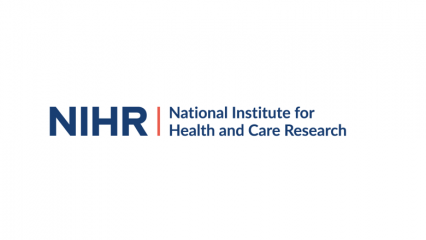Wayne’s story
Wayne was diagnosed with Choroideremia when he was 17 years old. The condition is a form of blindness caused by a faulty gene on the X-chromosome – it affects 1 in 50,000 people.
Wayne was a patient of Graeme Black, Professor of Genetics and Ophthalmology at Manchester Centre for Genomic Medicine, Saint Mary’s Hospital, who referred him to a ground-breaking gene therapy trial to treat the condition in 2013.
The 45-year-old project manager lives in Staffordshire with his wife and two children.
Choroideremia has a significant effect on my daily living. As I am in the latter stages of the condition, I only have about 6 degrees of vision, so it affects everything from mobility to simple daily tasks. For example, something simple like chopping a carrot is challenging as I can see the knife and the carrot where I am chopping, but I cannot see my fingers, so have to be extremely careful
I was originally referred to Saint Mary’s Hospital in 2009 after reading that genetic testing was available to confirm diagnosis of Choroideremia and to be added to a database of X-Linked retinal disease. Seeing Professor Black was a significant event as he was the first consultant I had seen, who not only had seen other patients with Choroideremia, but understood the condition and how it affects people. We also received genetic counselling and advice from Ann Turgut, Genetic Counsellor, and Georgina Hall, Consultant Genetic Counsellor.
My blood and DNA was examined closely to find the missing or defective gene in my DNA; the tests came back as positive – the gene that causes Choroideremia was faulty. It was important for us to have that diagnosis; we wanted to make sure that it was Choroideremia because my daughter was going to be a carrier of the condition and if she had any children in the future, then they would be at risk of having the condition as well.
We saw on the news in October 2011 that a trial had been started in Oxford to treat Choroideremia and we couldn’t quite believe it, it was such an exciting time. Finally after years of having no hope and the inevitability that I was going to go blind, there was now a hope that there was a treatment for people with Choroideremia and the condition could be stopped or even improved and it was just such good news.
Two years later we visited Professor Black again, to be referred to Oxford to be assessed for participation in the gene therapy trial. We travelled to meet Professor Robert MacLaren, Oxford Royal Eye Hospital, and after a number of visits and assessment tests, I was deemed to be a suitable clinical patient to be included on the trial.
In April 2013 I went to Oxford and, on my birthday, I was the ninth patient to be injected with a virus which contained the missing gene that had caused my condition. The process itself was painless and quite quick, I was home the next day and then we sat back to see what would happen.
About 10 days after the operation, I was walking my dog and I was looking around – and I suddenly became aware that things seemed a bit brighter and I couldn’t really put my finger on it, until I started comparing the treated eye to the untreated eye. I noticed that through the treated eye, the colours seemed more vivid and the sunlight more clear, and just generally I could see better through the eye that had been treated and this was just 10 days after the operation. That continued to improve over the coming months until the point where it had got as good as it was going to get and had stopped the condition from getting any worse. I also saw slight improvements as well, it was a good indication that the gene therapy had actually worked and had a positive effect on my eye.
The first thing I noticed the difference with was colour; I could see colours clearer and brighter; I dealt with low light and bright light better. Then one evening, in the summer, after the treatment had been completed, I was outside and I looked up at the sky and for the first time in about 15 years I actually saw some stars in the sky – not many, I can’t see too many – but, it was just more proof that the gene therapy was having an effect on my eye and I could see something that I hadn’t seen for a long time.
The expectation was that the therapy would halt the progression of the disease. So far, three years on, that definitely seems to be the case. The treatment would not restore any of the lost vision, but it has improved the remaining vision. Only one eye has been treated so I hope that the trial will continue to be successful and it will become a licensed treatment. I think that the biggest effect on me was that there was, for the first time, hope that I, and people like me, would not go blind.
The best advice I could give to anyone considering taking part in research would be to think very carefully about the risks involved and the possible consequences. I purposely did not set any expectations for the trial, other than to recover after treatment and to approach things with a cautious optimism. If it did not work, then I would not have lost anything. If it did work, then it would be a bonus.




